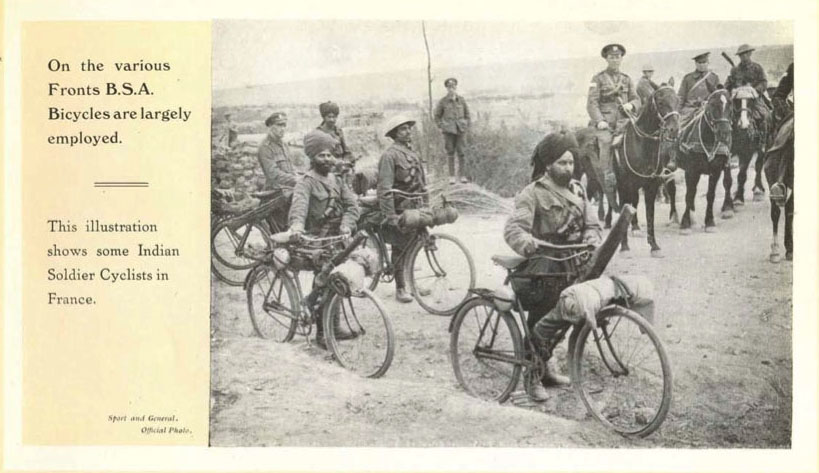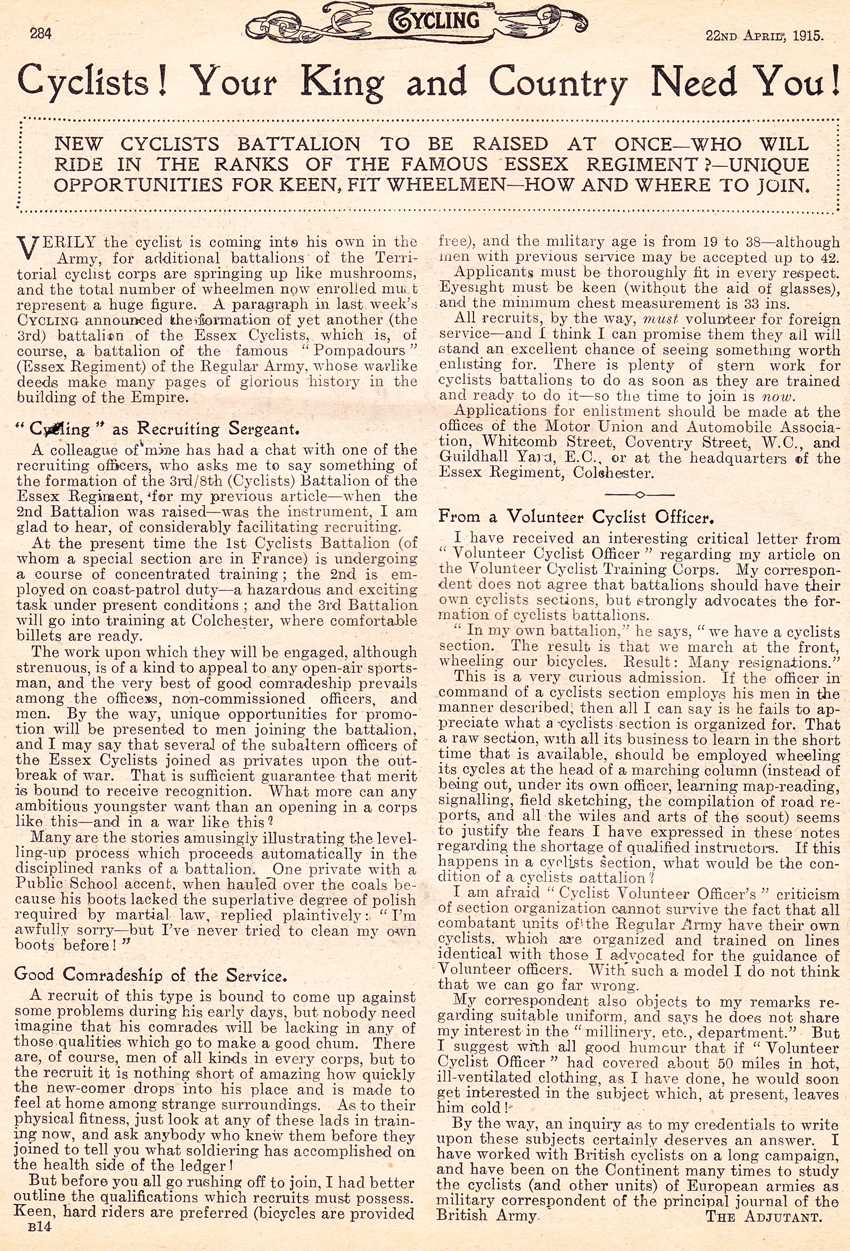

THE vast assembly of buildings and workshops, full of busy workers and humming with the energy of thousands of wheels, all engaged on the production of the various manufactures for which The Birmingham Small Arms Company Limited is world-famous, naturally provokes the question how so great an organization had its origin. A brief resume of the rise and progress of the B.S.A. Company will therefore doubtless be of interest, not only to those familiar with the letters ” B.S.A.” and what they stand for, but also to everyone interested (and who is not ?) in the question of our national munition supplies.
Founded at a time of national crisis, The Birmingham Small Arms Company is an example of how history repeats itself, as it was directly owing to a shortage of munitions at the outbreak of the Crimean War (I854-56) that the Company had its inception. Those were days long before a Ministry of Munitions was thought of, and the situation being extremely serious the Government called on sixteen firms of small arms manufacturers in Birmingham to furnish a supply of arms. At this period the rifles were of the muzzle-loading pattern, and were entirely hand-made, but it was not long before the Government commenced the manufacture of rifles by machinery at the Enfield Works. This was shortly followed in 1861 by the members of the Birmingham small arms trade consolidating themselves under the title of The Birmingham Small Arms Company. The munition resources of Birmingham being thus co-ordinated, a factory was erected at Small Heath for the manufacture of small arms by machinery.
The year 1902, was an eventful one for the B.S.A. Company, for in that year the War Office adopted B.S.A. Fittings for Military Bicycles, and the majority of bicycles used by the War Office from that time onward were built of B.S.A. Fittings. No higher compliment could be paid to the B.S.A. Company than this adoption by the War Office of the productions of the Cycle Department, after their many years’ experience of the absolute reliability of the firm’s rifles.
In 1904 the B.S.A. Company manufactured a Rear Rim Brake with Pull-up Lever. Up till then the use of rim brakes had been confined to the front wheel.
In 1908, to meet the somewhat altered conditions of trade, it was considered advisable to manufacture complete B.S.A. Bicycles in the B.S.A. Factories. In announcing the new policy at the Annual Meeting the Chairman stated ” that the Company had decided to widen the policy in regard to the manufacture of complete bicycles. Hitherto only cycle agents were supplied with complete machines bearing an agent’s transfer. In view of the somewhat altered conditions of the trade, it was considered advisable to manufacture a complete B.S.A. Bicycle, under the most rigid inspection, with the world-famed B.S.A. Fittings.
There would be one grade of machine-the highest possible quality only. The machine so offered to the public would be listed at a higher price than that at which bicycles built with B.S.A. Fittings had been sold by local agents and makers. The management believed that this would not only create a greater demand for B.S.A. productions, but that it would have a steadying effect on the cycle trade generally. Such a policy must tend to place the B.S.A. Fittings on a higher plane, and to a great extent prevent bicycles built with B.S.A. Fittings being sold at ridiculously low prices, showing little or no margin of profit to the retailer.” Although the new policy was severely criticised, events have proved that it not only helped the trade generally, but was much appreciated by the public. The complete B.S.A. Bicycle produced at The B.S.A. Company’s works bears a special transfer.
Fittingly enough this history, which commenced with the Crimean War, brings us to the days of the Great War, when once again the national demand is “Munitions and still more munitions,” but in far greater quantities than ever conceived possible in 1855.
Only with the passing of time will it be possible to obtain a full perspective of all the events now taking place. Suffice it to say that with the declaration of war, in August 1914, the B.S.A. Factories entered on a period of tremendous activity. Day and night, week-days and Sundays, without cessation, munitions were produced in quantities which even surprised the management. Being immediately forthcoming, the value of this aid can scarcely be overestimated; for it materially assisted our army to “keep up its wicket” in the early days of the War against an enemy of unprecedented strength and organization…
From the early days of the B.S.A., when Birmingham gun-makers co-operated to give their services to their Country in its hour of need, the products of the Company have steadily grown in popularity. However keen the competition, one high standard of quality is rigidly maintained, and on this policy is based the long record of success comprised in B.S.A. History.
– BSA History Booklet, 1914
BSA was formed – during the Crimean War – to provide arms for the British Government. With the declaration of War in 1914, the BSA factory was again turned over to full-time war production. The company already manufactured a military pattern folding bicycle. This is not a military model, but a single speed machine of the type commonly used during WW1. There were many Volunteer Cyclists Corps and BSA bicycles were favoured by officers and men. Upon enlistment, they could buy such a bicycle direct from the manufacturer, if necessary by hire purchase.
In the picture below, showing BSA bicycles in use with rifle mounting brackets fitted, that the rifle could be mounted with trigger facing either up or down. I have mounted the rifle on this bicycle both ways.


1917 WW1 BSA All-Weather ‘Model 14’ with Military Fittings
24″ Frame
28″ Wheels
Eadie Coaster Rear Brake
Brooks Frame Bag, BSA Toolbag, Rear Carrier, Rifle Mounts
(Now sold)

This black BSA roadster has All-Weather mudguards, no gears, and an Eadie Coaster rear brake. It is typical of the bicycles used by officers and enlisted men during WW1.
It is fitted with rifle mounting brackets of military style, and a WW1 Practice Rifle.
The rifle is NOT included in the sale but is for display purposes only.
The paintwork is original and unrestored, except for the rear mudguard, which which has been repainted under the rear carrier. It is scratched here and there. Some of the original box lining remains. I have left it dirty and in oily rag condition, so it looks like it has recently returned from manoeuvres. A good clean and polish would alter that appearance considerably if required.
It is a rare survivor in its own right, without a military application. With the added fittings it is ideal for shows, displays and rides with a military theme in this WW1 centenary year. The machine is in full working order and ready to ride and display.







CYCLISTS! YOUR KING & COUNTRY NEED YOU!

















1914 BSA CATALOGUE





WW1 PRACTICE or TRAINING RIFLE

There was a shortage of rifles in Great Britain and America at the start of WW1, so companies in both countries assembled training rifles to help with drill practice before troops were sent into combat. This is a British WW1 practice rifle.











1918 BSA CATALOGUE



























































